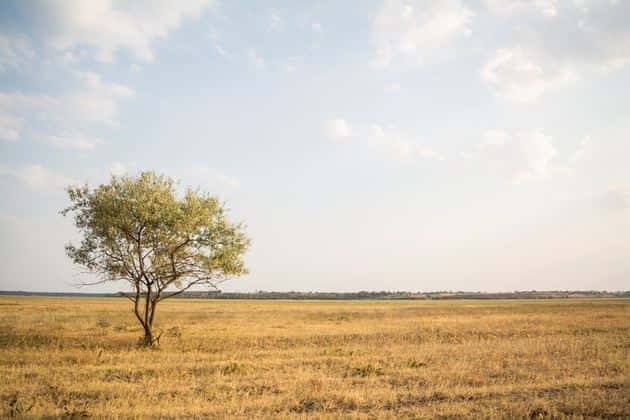What differentiates a good photo from a great one? Is it the type of lens used to capture the shot? The cost of the camera? The settings? While all of these things play a part, image composition is what makes a fabulous photo stand out from the mediocre.
We’re going to take a look at some of the rules of composition that you can follow to up your photography game. Like all good rules, photography rules can be bent and broken when the need arises, but you should learn to follow them first.
What does composition mean in photography?
Photo composition is the way elements and objects you capture are placed within the shot. A good picture composition is balanced, with just the right amount of detail. It may use symmetry, patterns, or a unique point-of-view to convey a mood, expression, or thought.
A well-composed shot will guide the viewer's eye throughout the frame, keeping their interest. In fact, even the most boring subject can be turned into an interesting photograph with a thoughtful composition. A poorly executed composition, on the other hand, can completely ruin the photo, no matter how fascinating the subject.
The elements of composition
Composition in photography combines certain elements to create an interesting image. And because photography is an art form, the following elements of composition may bring you straight back to your high school art class:
- Line. Using lines in your image will capture the eyes of the viewer, leading them through the composition and keeping them focused on the photo. Lines are often the focus in architecture shots, as well as shots of roads, rivers, and bridges.
- Color. There are endless ways to use color to your advantage when composing shots. For example, little pops of color will create a strong focal point, and contrasting colors will attract attention.
- Shape. Shapes are often the first things that stand out when you look at a scene. Shape in photography focuses on the two-dimensional qualities of an object, using them to make the shot more interesting.
- Space. The element of space goes hand-in-hand with shapes, surrounding them and other elements in your photo. Make sure you compose your shot with an eye for so-called negative space — the areas of the photo that are free from any objects.
- Form. While shape focuses on the two-dimensional, form pays more attention to the three-dimensional qualities of an object. To make use of form in your photographs, you will have to consider how light and shadow affect your subject.
- Pattern. A pattern is when other elements — line, color, or shapes — repeat throughout your photo to create drama and interest.
- Texture. You can bring a tactile element to your photos by looking for unique textures when composing a shot. Using texture as a composition element will make your photos take on a three-dimensional quality.
- Balance. Using balance in your photography is a way to give objects equal weight within a photo’s composition. It doesn’t necessarily mean symmetry — it’s more about placing the object in a way that’s visually pleasing. The degree of balance that you use in a photo depends on your subject and the mood you are hoping to create.
Photography composition rules to follow
Now that you have an idea of the basic elements of composition, learn how to use them to create stunning images. Here are some photography composition tips, techniques, and rules to help you improve your photography.
1. Use the rule of thirds
The rule of thirds in photography is one of the first composition techniques you should learn. Using the rule of thirds will help you create more balanced photos. Here’s how it works: when framing your shot, divide your image into thirds, both vertically and horizontally. This will give you nine squares in your frame and four main intersections. The rule of thirds suggests that you position all of your main points of interest along those four intersections. This is because the viewer’s eye will travel naturally around your composition instead of getting stuck in a center-weighted shot. The rule of thirds is something to keep in mind not only when shooting, but also while editing, as you can often crop your photo to take advantage of the technique.

As you’re learning to compose and frame exceptional shots, you’ll take a lot of photos. It’s better to develop a system for keeping them in check early on. A duplicate photo finder like Gemini 2 for Mac can help you quickly get rid of those numerous similar shots you take while experimenting with composition. Download it for free and give it a spin.
2. Now try the golden ratio
The golden ratio is like the big brother of the rule of thirds. It uses a similar concept, but instead of a simple grid, your composition follows the Fibonacci Spiral — a curve that gets wider for every quarter turn it makes. Imagining the Fibonacci Spiral when composing your photo allows you to place your subjects along a curved line, rather than on a grid. This entices the viewer’s eye to circle around your photo, finally ending up at the middle of a tight coil, which actually coincides with the points on your rule-of-thirds grid.
3. Look for leading lines
Leading lines make use of lines as a strong design element in your composition. Whether they are parallel, vertical, horizontal, or diagonal, when used correctly, lines will naturally draw the viewer's eye. Roads and paths are commonly used as leading lines, but you can also use architecture, fences, bridges, and rivers. Leading lines should take the viewer to a point of interest in your composition. They shouldn’t lead them out of the photo or away from your subject.
4. Work with framing in your photography
Framing in photography means highlighting your subject and drawing in the viewer by creating a frame within the frame of your photo. You can choose a frame that is natural, such as tree branches, foliage, or flowers, or you can look for man-made frames like doorways, tunnels, or windows. Frames will direct the viewer’s eye toward the subject of your photo, and they also help give the photo context.

5. Try different viewpoints
Most photos are shot from eye level, which can make for some lovely, but uninspired photos. You can easily create drama in your photos by changing the angle from which you’re shooting. When composing your shot, look at the scene from all angles, high and low. You’ll be amazed at how much the viewpoint can improve your composition.
6. Create depth in your composition
We’ve already gone over some of the techniques that will help you create depth in your photos — leading lines and framing. You can also add depth by ensuring that you capture distinct objects in your foreground, middle ground, and background. The foreground is particularly important when creating the illusion of depth in a two-dimensional photo. Look for objects you can incorporate into the foreground of your composition, and the rest of your photo will become much more interesting.
7. Fill the frame
Filling the frame with your subject helps you focus the attention on them and eliminate busy backgrounds. This composition technique works particularly well for portraits, still life photos, and macro photography. You can also apply it in post-processing by cropping out unnecessary clutter. Crop tightly around your subject, and you’ll capture more detail and a more dramatic mood.

While we all agree that good composition matters in photography, the way you get there is subjective. The composition techniques detailed above are just a starting point. As you experiment with them, you’ll develop an eye for combining elements. Eventually, some of your photos might break all known composition rules, while still being well-shot and well-composed.





